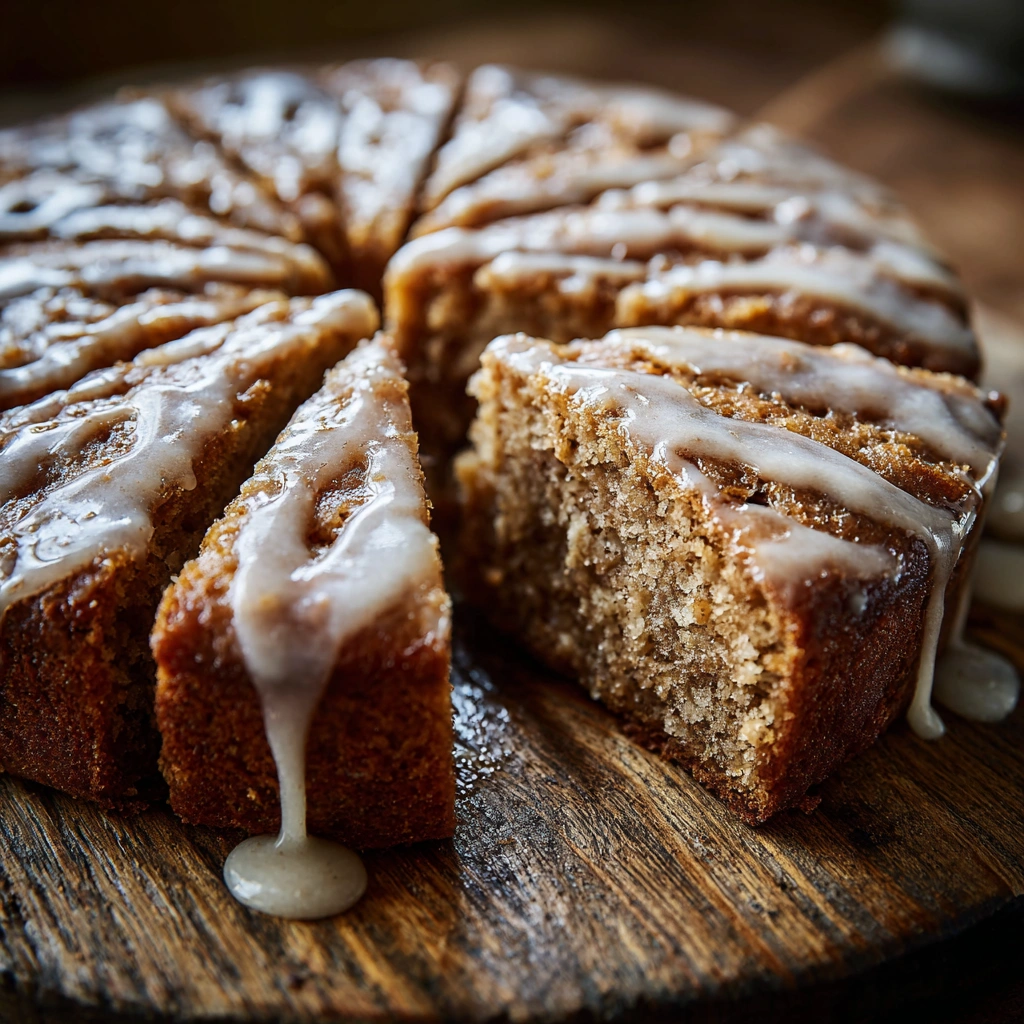Gluten-Free Apple Cider Cake has become my signature fall treat—born from a kitchen accident and a craving for something sweet that wouldn’t mess with my gluten sensitivity. A few autumns ago, I was experimenting with my favorite apple cider and ended up with a cake so moist and spiced, even my gluten-loving friends begged for seconds. It reminded me that comfort food doesn’t have to compromise health or taste—it just needs a little creativity.
In this article, we’ll break down exactly how to make a gluten-free apple cider cake that’s soft, flavorful, and perfect for any occasion. You’ll learn about the best ingredients, baking tricks, how to keep it moist, and how apple cider vinegar plays a surprisingly powerful role in gluten-free baking. We’ll also explore frosting ideas, pairing tips, and answer top FAQs like “Is Angry Orchard cider gluten-free?” and “How do I prevent dryness in gluten-free cakes?” So if you’re gluten-free by choice or necessity, this guide will show you how to bake a cake that doesn’t just meet the mark—it raises it. Don’t miss our gluten-free dairy-free desserts for more ideas that won’t compromise flavor.
Table of Contents
Understanding the Gluten-Free Apple Cider Cake
What is a Gluten-Free Apple Cider Cake?
A gluten-free apple cider cake is a warm, spiced dessert made without wheat flour, using apple cider and a gluten-free flour blend to deliver a moist, flavorful bite. It’s perfect for fall gatherings, simple enough for beginners, and indulgent enough to impress guests. The cake combines the tangy sweetness of apple cider with spices like cinnamon and nutmeg to create a rich, seasonal treat that just happens to be gluten-free.
This cake stands out because it solves a common problem: dryness in gluten-free baking. With cider and the right fats, it stays soft and light. Even your gluten-eating friends won’t believe it’s gluten-free. Want more comfort food inspiration? Check out our creative twist on savory sweetness with the peanut butter and jelly burger.
Why Apple Cider Works Perfectly in Gluten-Free Baking
Apple cider brings more than just fall flavor—it plays a key role in moisture and texture. Its natural acidity activates leaveners like baking soda, giving gluten-free batters the rise and softness they often lack. That’s especially important when baking without gluten’s binding power.
Plus, apple cider keeps the crumb moist and tender, reducing that gritty texture many gluten-free cakes suffer from. With the right blend of cider, fat, and spice, your gluten-free apple cider cake turns into a cozy masterpiece. For more flavorful pairings, don’t miss our guide to bold, layered tastes in the black angus beef gourmet burgers.
Core Ingredients Breakdown
Choosing the Right Gluten-Free Flour Blend
The heart of a perfect gluten-free apple cider cake lies in the flour blend. Not all gluten-free flours behave the same—some are too dense, others too crumbly. For best results, use a blend that includes rice flour, tapioca starch, and either sorghum or almond flour. Discover great ideas like the best gluten-free bread that also relies on structure-enhancing flour blends. These offer the right balance of structure and softness.
Many bakers also add xanthan gum or psyllium husk to mimic gluten’s binding power. These additions prevent the cake from falling apart. Avoid using just coconut or oat flour on their own, as they can dry out the cake. Need help understanding food balance? Don’t miss our guide to natural peanut butter health benefits, where we break down nutrient-rich choices.
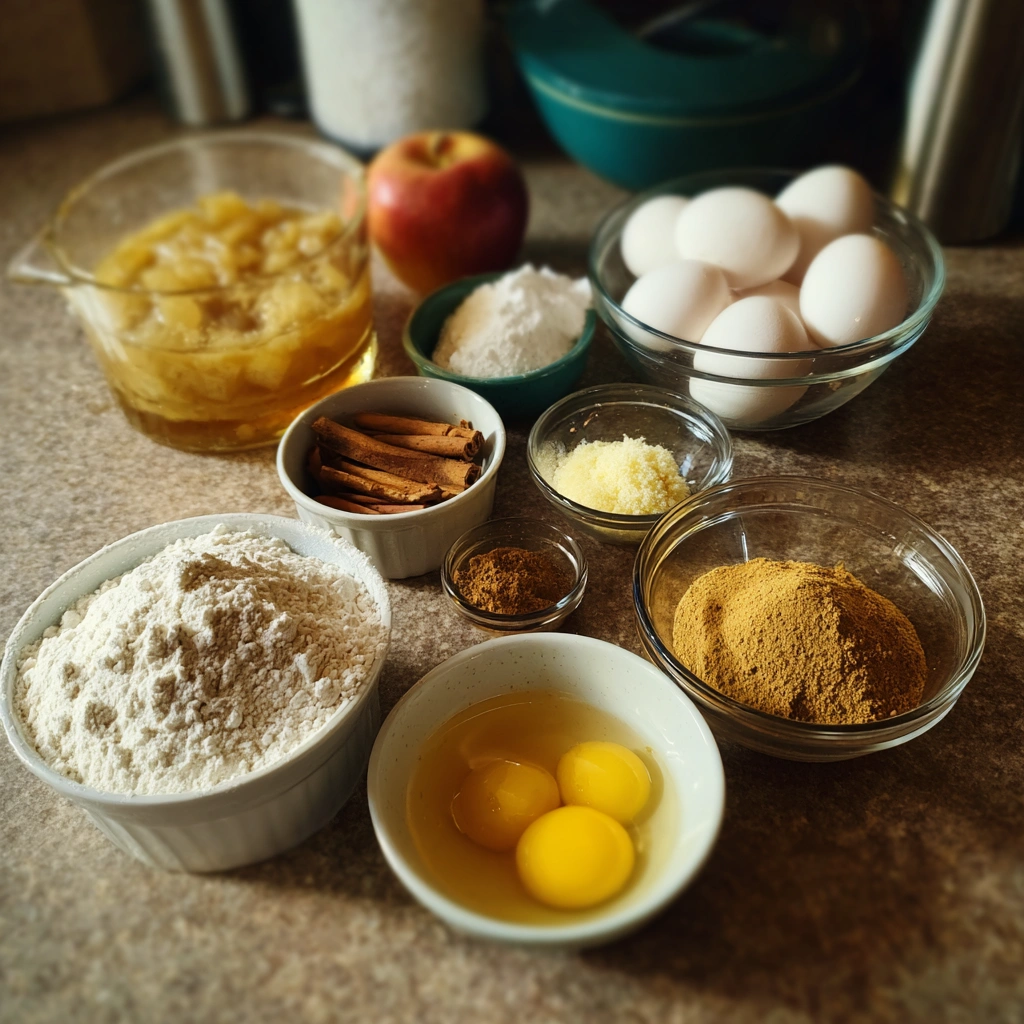
Best Type of Apple Cider for Cakes (Angry Orchard & More)
Use fresh, unfiltered apple cider when possible—it brings bold apple flavor and natural sweetness. However, hard ciders like Angry Orchard are also gluten-free and can work well if you want a subtle tartness or deeper fermented notes. Just make sure the cider you use is labeled gluten-free to avoid cross-contamination.
For a richer flavor, simmer the cider to reduce it before adding to your batter. This intensifies the apple essence and gives your gluten-free apple cider cake a warm, caramelized depth. Looking for bold recipe combos? Don’t miss the spiced layers in our truffle smash burger that also balance flavor beautifully.
Key Techniques for Baking Gluten-Free Cakes
How to Bake Gluten-Free Without It Falling Apart
Baking a gluten-free apple cider cake that holds together starts with structure. Use a flour blend with binding agents like xanthan gum or guar gum. Let the batter rest 15–20 minutes before baking—this hydrates the flour and improves texture. Also, avoid overmixing, which can make the cake tough or sink in the middle.
For more kitchen hacks that help balance texture, check out the layering tricks we use in the truffle burgerbest for mouthfeel perfection.
Moisture Retention: Keeping Your Cake from Drying Out
Moisture is everything in gluten-free baking. Use ingredients like applesauce, yogurt, or sour cream along with your apple cider to lock it in. Don’t skip fats—oil or butter add richness and prevent a dry crumb. And be precise with your baking time; overbaking is the quickest way to lose moisture.
Want to explore more ways to blend flavor and moisture? Discover bold flavor balance in our pb and j burger where richness meets creativity.
These small steps make a big difference when baking the perfect gluten-free apple cider cake.
The Role of Apple Cider Vinegar in Gluten-Free Baking
What Apple Cider Vinegar Does in Gluten-Free Recipes
Apple cider vinegar is a secret weapon in gluten-free apple cider cake recipes. It reacts with baking soda to create lift, making the cake lighter and fluffier—essential when there’s no gluten to trap air. Just a teaspoon or two makes a big impact on structure and rise.
Its acidity also balances sweetness and improves texture. That slight tang enhances the apple flavor and keeps your crumb tender, not dense. Curious about how small ingredients create big flavor? Explore the flavor boost techniques used in our carls jr hangover burger girl.
Acidic Balance and Leavening: Getting That Perfect Rise
The key to a perfect rise in gluten-free baking is balancing acidity and leavening. Apple cider vinegar helps activate baking soda, producing carbon dioxide bubbles that make the batter rise. This creates a soft, airy crumb in your gluten-free apple cider cake.
Without it, the cake can turn flat or gummy. Want more on getting structure right? Learn how we built up texture in the steakhouse burger using layering and seasoning.
How to Keep a Gluten-Free Cake Moist and Tender
The Moisture Secret: Fat, Eggs, and Liquids in Balance
A moist gluten-free apple cider cake depends on the right mix of fat, eggs, and liquid. Use oil instead of butter for better moisture retention, and don’t skimp on eggs—they provide structure and softness. Apple cider, applesauce, or even a splash of almond milk can help lock in that moisture.
Too dry? Add more fat or swap out milk for yogurt. Want more creative ways to balance texture? See how we kept it juicy in the kobe burger.
Common Moisture Mistakes in Gluten-Free Baking
Overbaking is the #1 mistake—set a timer and check early. Avoid dry flour blends with no starch or binders, and don’t skip resting the batter before baking. It helps the flour absorb liquid fully.
Need help building a better base? Discover how ingredients stay balanced in the carls jr hangover burger for a consistently tender result. With the right tweaks, your gluten-free apple cider cake stays soft for days.
Step-by-Step Gluten-Free Apple Cider Cake Recipe
Prep Work & Ingredient Substitutes
To make the best gluten-free apple cider cake, gather a reliable gluten-free flour blend, unfiltered apple cider, eggs, oil, baking soda, apple cider vinegar, and spices like cinnamon and nutmeg. For extra moisture, include applesauce or yogurt. If dairy-free, use almond milk and coconut yogurt.
Preheat your oven to 350°F and grease a loaf pan. Let your cider simmer for 10 minutes to reduce—it deepens the flavor. Need more ingredient swap ideas? See how we played with flavor in the peanut butter and jelly burger.
Mixing, Baking, and Cooling Instructions
Whisk dry ingredients in one bowl and wet in another. Combine them gently, then let the batter rest for 15 minutes. Pour into the pan and bake for 40–45 minutes or until a toothpick comes out clean.
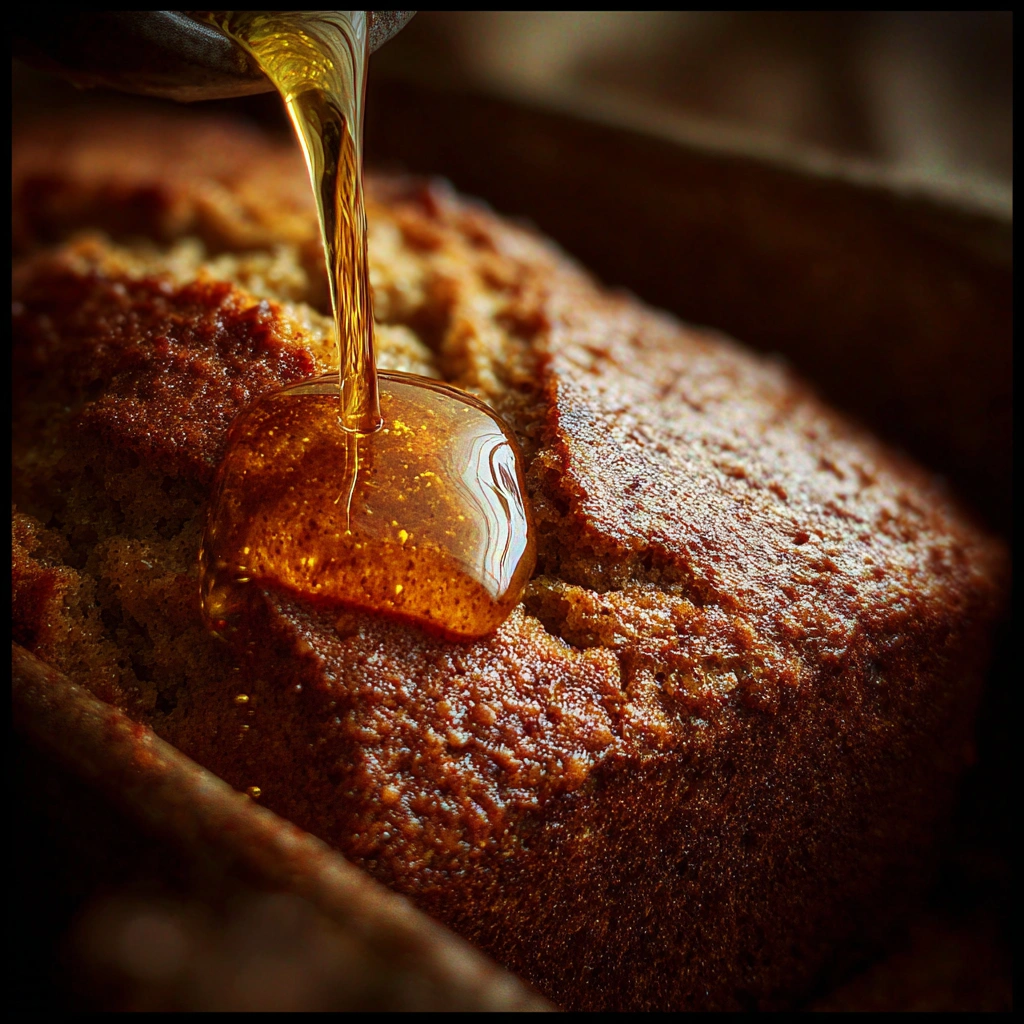
Cool fully before slicing—it sets the crumb and improves texture. For a creative serving twist, check out the flavorful builds in our history of burgers and how layers add impact. Your gluten-free apple cider cake will come out tender, flavorful, and fall-ready.
Topping Ideas & Frosting Pairings
Cinnamon Glaze, Maple Icing, and Dairy-Free Options
The perfect gluten-free apple cider cake deserves an equally delicious topping. A simple cinnamon glaze made with powdered sugar, apple cider, and ground cinnamon adds sweetness and shine. For something richer, try a maple icing or cream cheese frosting—both complement the cider flavor beautifully.
Need dairy-free? Use coconut cream or a vegan butter substitute for the same creamy effect. Want more creative topping combos? Don’t miss our savory-sweet ideas in the burger king double cheeseburger nutrition breakdown.
How to Create the Perfect Finish for Your Cake
Let the cake cool completely before glazing to avoid melting. Drizzle glaze slowly for a rustic finish or spread icing evenly for a cleaner look. Sprinkle chopped nuts or cinnamon sugar for texture and added flair.
Looking to elevate your dessert presentation? Get inspired by the stacked layers and texture details from the truffle burgerbest—proof that the final touch makes all the difference. Your gluten-free apple cider cake becomes a centerpiece, not just a dessert.
Serving, Storing, and Pairing Suggestions
What to Serve with Apple Cider Cake (Hot Drinks & Ice Creams)
A warm slice of gluten-free apple cider cake pairs perfectly with chai tea, spiced lattes, or hot apple cider. For dessert lovers, serve it with a scoop of vanilla or cinnamon ice cream—it enhances the cake’s natural spice and sweetness.
Want more flavor pairings? Take a look at how we blend sweet and savory in the hangover burger for bold, satisfying combos.
Storage, Freezing, and Reheating Tips
Store your cake in an airtight container at room temperature for up to 3 days, or refrigerate for longer freshness. Looking for inspiration? Try gluten-free strawberry muffins for another cozy treat to keep on hand. Freeze individual slices for easy grab-and-go treats—just thaw at room temp or reheat gently in the microwave.
Curious about keeping food fresh without sacrificing texture? See how we handle balance in the pb and j burger for long-lasting quality and taste. A well-kept gluten-free apple cider cake stays just as moist and delicious the next day.
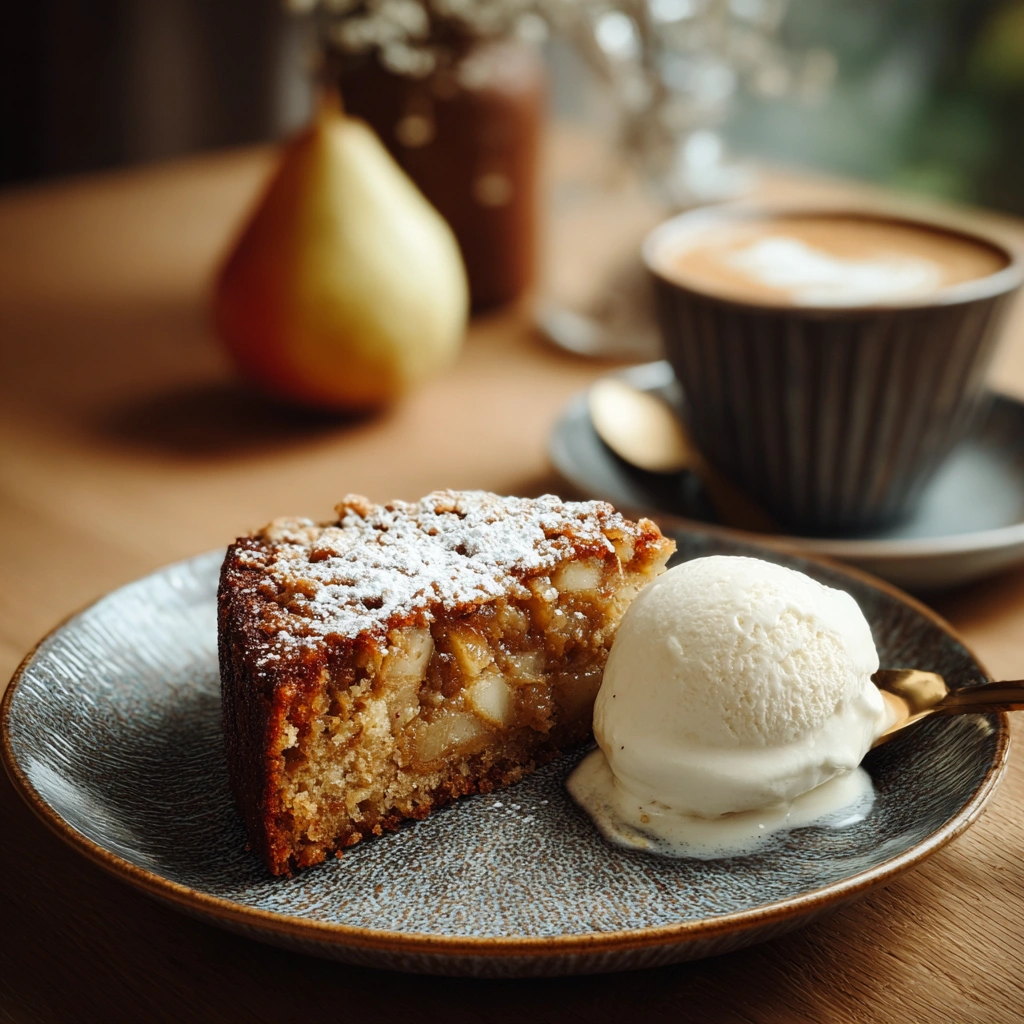
Troubleshooting Common Issues
Why Your Gluten-Free Cake May Be Gritty or Dense
A gritty gluten-free apple cider cake usually means the flour blend wasn’t hydrated enough. Letting the batter rest before baking helps smooth texture. If it’s dense, you may need more leavening or acid—like apple cider vinegar—to help the rise.
Using the wrong flour mix or skipping binders like xanthan gum can also cause structure issues. Want to learn more about balance in tricky recipes? Check out the build techniques in our truffle smash burger for a flavor and texture boost.
How to Fix a Cake That’s Too Dry or Crumbly
Dryness often comes from overbaking or not enough fat. Add applesauce, yogurt, or oil to boost moisture next time. Crumbly texture? That’s a sign your mix needs better binding—add an extra egg or try psyllium husk.
Looking for ways to improve consistency across recipes? Don’t miss how we layered texture and richness in the black angus beef gourmet burgers. With a few small tweaks, your gluten-free apple cider cake will bake up soft, tender, and just right.
Final Tips for a Foolproof Gluten-Free Apple Cider Cake
Keep It Simple and Seasonal
The beauty of a gluten-free apple cider cake lies in its simplicity. Check out gluten-free and dairy-free breakfast pizzas for another way to start your day with flavor minus the gluten. Use seasonal ingredients—fresh cider, fall spices, and quality gluten-free flour. Stick to what works and don’t overcomplicate the recipe.
Want to see simple ingredients turned into unforgettable bites? Check out how we do it in the pb and j burger—proof that basic can still be bold.
Practice Makes Perfect
Gluten-free baking improves with practice. Don’t be discouraged by minor texture issues—adjust and try again. Taste as you go, measure carefully, and always rest the batter before baking.
Need inspiration for creative kitchen wins? Discover how we combine flavor and form in our popular peanut butter and jelly burger. With a little patience, your gluten-free apple cider cake will turn out better every time.
Frequently Asked Questions
What does apple cider vinegar do for gluten-free baking?
In a gluten-free apple cider cake, apple cider vinegar helps with rise by activating baking soda. It also balances sweetness and improves texture, making the cake lighter and fluffier. For another way vinegar transforms recipes, check how acidity enhances flavor in our black angus beef gourmet burgers.
What is the trick to baking with gluten-free flour?
The key is using a quality flour blend with binders like xanthan gum. Let the batter rest to hydrate the flour and avoid overmixing. Need help with tricky textures? See our layers and structure tips in the hangover burger no bacon.
Is Angry Orchard apple cider gluten-free?
Yes, Angry Orchard is naturally gluten-free and safe for celiac-friendly recipes. It can even add a fermented note to your gluten-free apple cider cake.
How to make a gluten-free cake more moist?
Use ingredients like applesauce, oil, or yogurt. Don’t overbake, and store it properly. Curious how we keep bold burgers juicy? Don’t miss our tips in the carls jr hangover burger.
Conclusion
A well-made gluten-free apple cider cake proves you don’t need gluten for a moist, flavorful, and satisfying dessert. With the right flour blend, real apple cider, and simple baking techniques, you can create a cake that’s soft, spiced, and full of fall comfort.
This recipe brings together balance, structure, and seasonal flavor—all in one slice. Whether you’re serving it at a family gathering or baking just because, it’s a guaranteed crowd-pleaser. For more comfort food ideas with a twist, check out our fun take in the history of burgers. Also, don’t miss our gluten-free Italian pasta salad for a savory side that’s light and satisfying. Your next favorite bake might just start with cider.
Print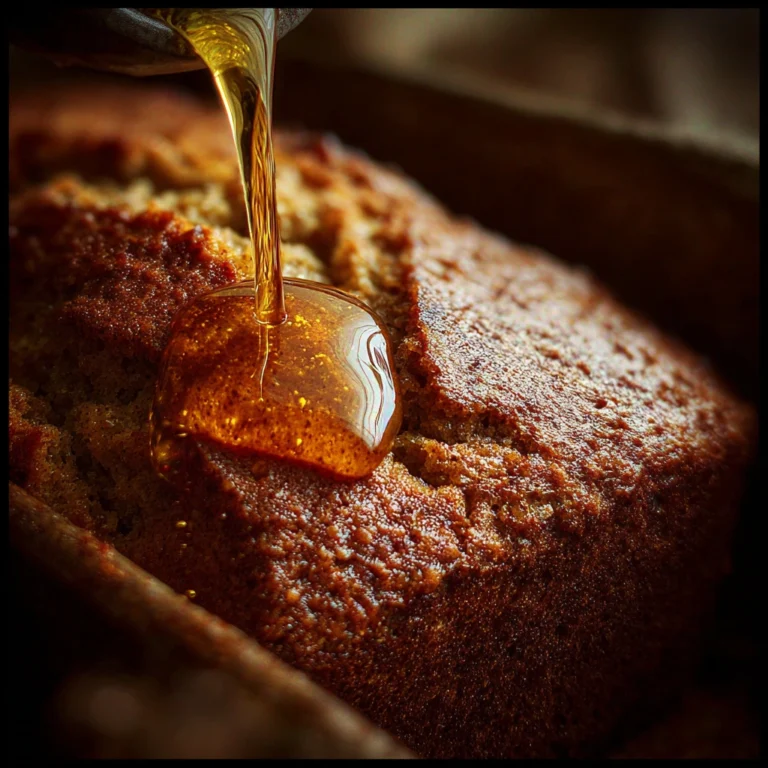
Gluten‑Free Apple Cider Cake
A moist, spiced fall cake made gluten‑free using apple cider for flavor, acidity, and moisture—perfect for cozy autumn gatherings.
- Total Time: 65 minutes
- Yield: 8–10 servings 1x
Ingredients
- 1½ cups gluten‑free flour blend (e.g. rice, tapioca, sorghum or almond flour) + xanthan gum
- 1 tsp baking soda
- 1 tsp baking powder
- 1 tsp ground cinnamon
- ¼ tsp nutmeg
- ½ tsp salt
- ½ cup granulated sugar
- ½ cup brown sugar
- 2 eggs
- ½ cup apple cider (reduced)
- ¼ cup apple cider vinegar
- ½ cup applesauce or yogurt
- ½ cup oil (or melted butter)
- 1 tsp vanilla extract
Instructions
- Preheat oven to 350°F (175°C), grease a loaf or cake pan.
- Simmer apple cider until reduced by half; cool.
- Whisk dry ingredients in a bowl.
- In another bowl, combine eggs, sugars, reduced cider, vinegar, applesauce (or yogurt), oil, and vanilla.
- Fold wet into dry gently; rest batter 15 minutes.
- Pour into pan, bake 40–45 minutes or until toothpick comes out clean.
- Cool completely before topping or slicing.
Notes
Let batter rest to hydrate flours; don’t overmix. Use reduced cider for depth. For frosting, try cinnamon glaze, maple icing, cream cheese or dairy‑free coconut‑cream frosting. Store in airtight container, freeze slices for quick treats.
- Prep Time: 20 minutes
- Cook Time: 45 minutes
- Category: Dessert
- Method: Baking
- Cuisine: American
Nutrition
- Serving Size: 1 slice
- Calories: 280
- Sugar: 22g
- Sodium: 150mg
- Fat: 12g
- Saturated Fat: 2g
- Unsaturated Fat: 8g
- Trans Fat: 0g
- Carbohydrates: 38g
- Fiber: 2g
- Protein: 3g
- Cholesterol: 30mg

